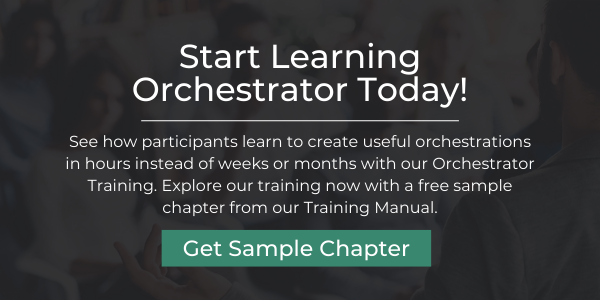Now You CAN Use the Orchestrator as a Testing Tool
We’ve seen many IT teams try to leverage the Orchestrator to test applications and orchestrations over the years. However, no one could use this platform as a robust testing suite for JDE applications because it wasn’t possible to define test cases and expected results. The new “Orchestration Assertions” functionality in the 9.2.5 release from JD Edwards EnterpriseOne has changed that. At ACBM, we jumped on the opportunity to use this new framework to turn the Orchestrator into a powerful testing suite. Let’s see why that matters and how to make the most of this feature.
Using Assertions for Testing Helps Keep Orchestrations and Applications Working
The addition of the Assertions Framework is a good reason to get up to date with your JDE upgrades. Starting with JDE 9.2, there has been a shift from intermittent application release to continuous adoption. This makes things a lot easier for JDE EnterpriseOne customers since they won’t have the highly involved and costly app upgrades to worry about.
However, the continuous adoption approach does mean there will be frequent, ongoing updates with new tools being added all the time. Every time there is even a minor update, this has the potential to break existing workflows. You need a very easy and automated way to conduct repeatable testing without spending time writing individual test scripts and manually submitting data test sets. Assertions help solve this problem.
What Can You Do with Assertions?
Here’s a quick overview from Oracle:
“The Orchestration Assertions functionality enables you to specify the values that you expect to be produced by an orchestration and validate the data produced by an orchestration. For example, you might assert that a value is expected to be within a certain range or must match a specific numeric value.”
You can use Assertions to:
- Test a value that an orchestration produces against an expected value
- Verify that the application ran without generating errors
- Verify that the application created the output values that you expect
- Define assertions on any data returned from any step of an orchestration.
For visual learners, there’s a quick video tutorial from Oracle with a sample use case involving Sales Orders.
ADEX Supercharges the Power of Assertions
The newest feature from Oracle gives you a great start in defining your assertions. However, that’s just the beginning. You still need a way to use these assertions at scale and monitor, store, and audit them. Fortunately, that problem has already been solved with the ADEX tool many of our customers use to call orchestrations directly from Excel spreadsheets. Pairing ADEX with the Orchestrator allows users to save and mass submit testing sets with the push of a button.
Here’s what you can do with ADEX and Orchestration Assertions:
- Automate regression testing to make sure app and tool upgrades don’t break anything
- Use large testing sets and call orchestrations hundreds (or thousands) of times with ease
- Have a complete set of audit documents to review (in PDF or Excel format)
ADEX and the JDE Orchestrator usually sit on the “citizen developer” side of the equation. But testing is one scenario where IT will enjoy getting hands on with this technology. End users can help define the relevant business rules and test data while IT handles creating the assertions and orchestrations. This collaboration will be a big benefit in keeping business functions running smoothly and making the most of JDE EnterpriseOne.
For guidance on how to use Orchestration Assertions, visit our Orchestrator page for more information. We’re excited to show you all the new ways you can save time on testing.



